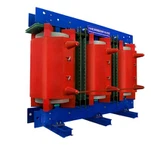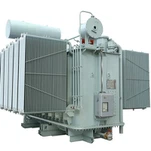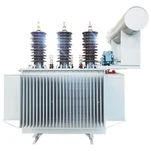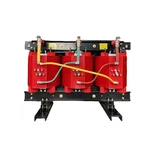What's the advantage and disadvantage of dry type transformer

Dry-type transformer, as an important power equipment, has been widely used in many application scenarios due to its characteristics. However, any device has its advantages and disadvantages, and dry-type transformers are no exception. Next, we will delve into the advantages and disadvantages of dry transformers in order to better understand and use it.
Advantages:
1. Strong fire performance: dry transformer does not contain flammable resin, no toxic gas, with flame retardant self-extinguishing characteristics, so its fire performance is very good.
This makes the dry-type transformer have a high guarantee in terms of safety.
2. Environmental protection and no pollution: dry transformer does not need to use insulating oil, so it will not pollute the environment.
At the same time, it requires no maintenance, further reducing the impact on the environment.
3. High mechanical strength: dry transformer has good mechanical strength and can withstand temperature changes and short circuit impact, thus ensure the stability of its operation.
4. Flexible installation: The dry transformer is small in size, light in weight, economical in installation, no special foundation is required, and can be installed with load center, greatly improving the flexibility of installation.
5. Temperature monitoring and protection: The dry-type transformer is equipped with an automatic temperature monitoring and protection system, which can detect and control the operating temperature of the transformer in real time to ensure the safe and stable operation of the transformer.
Disadvantages:
1. High cost: compared with oil-immersed transformers, the manufacturing cost of dry transformers is high, which limits its application in some low-cost projects.
2. The ability to resist harsh environment is relatively poor: dry transformers can generally only be installed indoors, and their ability to resist harsh environments is relatively poor, for example, it has limited adaptability to extreme environments such as high humidity and high temperature.
3. Large leakage resistance: Because the core of the dry transformer is made of silicon steel sheets, its permeability and magnetic resistance are small, resulting in large no-load current and relatively large leakage resistance.
4. High winding temperature rise: the iron core and winding of the dry transformer will generate heat during operation, and if the heat dissipation is poor, it will cause the winding temperature to rise, affect the insulation performance, and may even lead to insulation breakdown.
5. Maintenance difficulties: Although dry-type transformers do not need special maintenance during normal operation, once failure occurs, such as coil breakage, it is difficult to repair and replace, and the cost is high.
In summary, the dry transformer has the advantages of good fire performance, environmental protection and pollution-free, high mechanical strength, flexible installation, and temperature monitoring and protection.
However, its shortcomings such as high cost, relatively poor resistance to harsh environments, large leakage resistance, high winding temperature rise and difficult maintenance cannot be ignored.
Therefore, in the selection and use of dry transformers, it is necessary to comprehensively consider according to actual needs and conditions, in order to give full play to its advantages, while minimizing the impact of its shortcomings.










